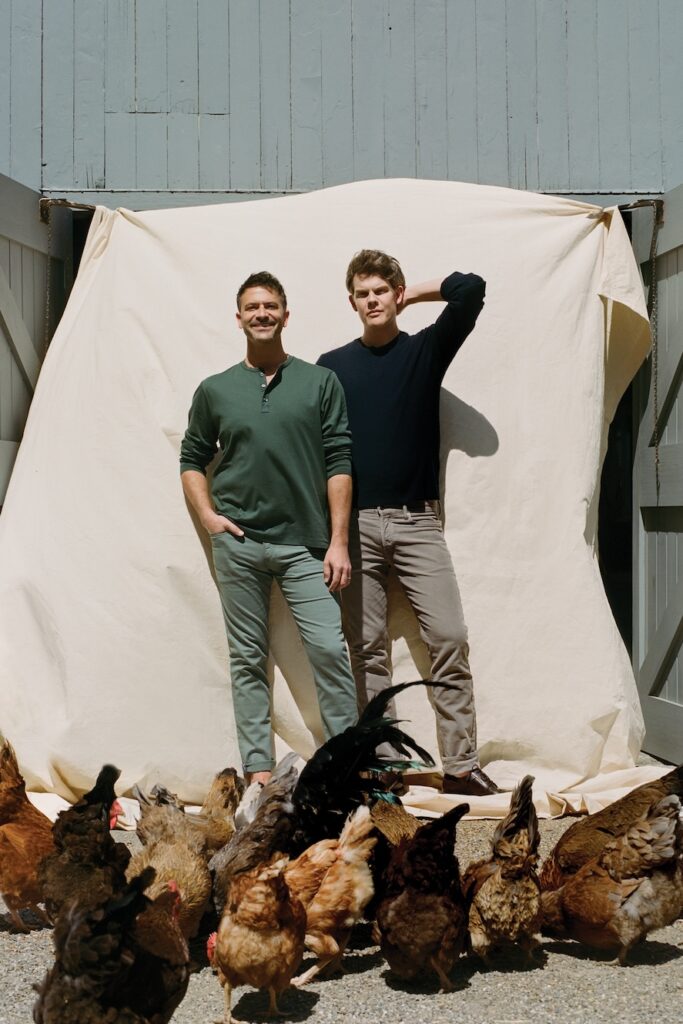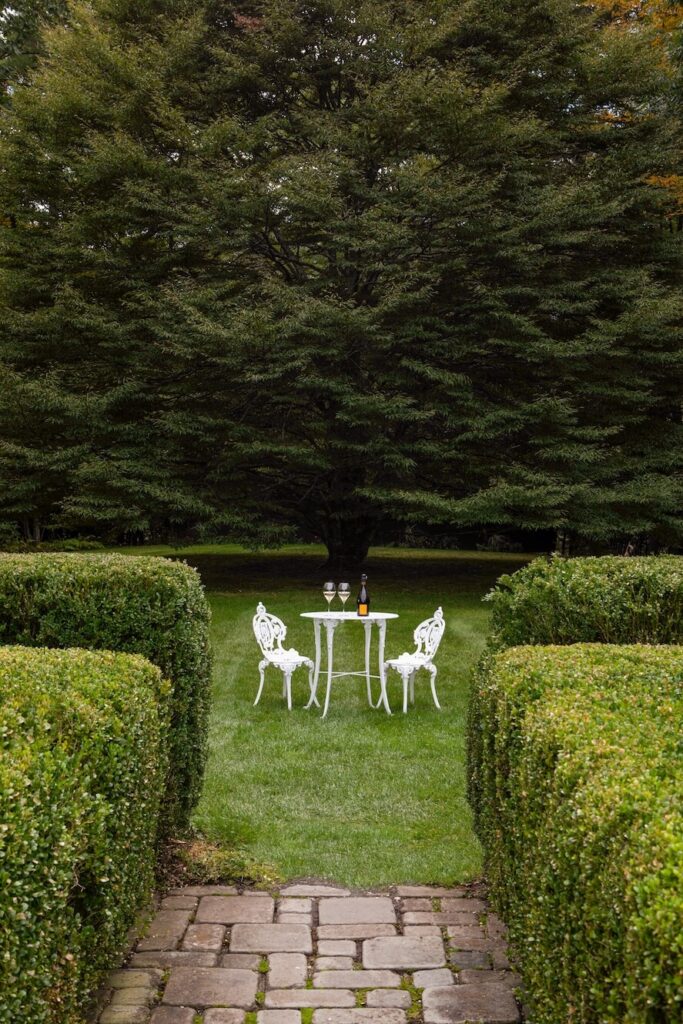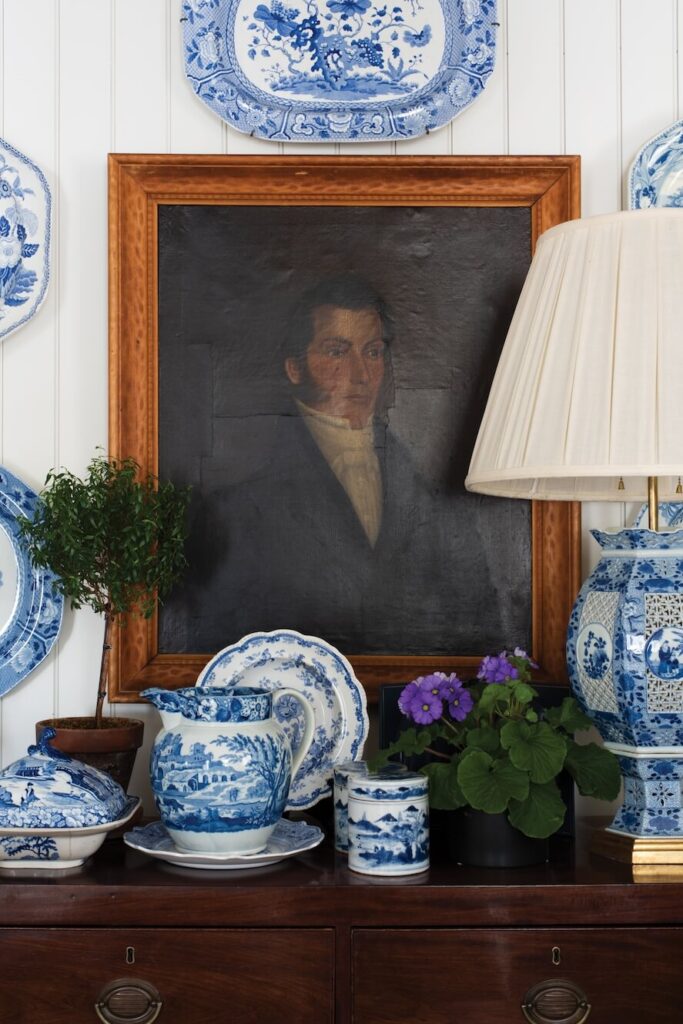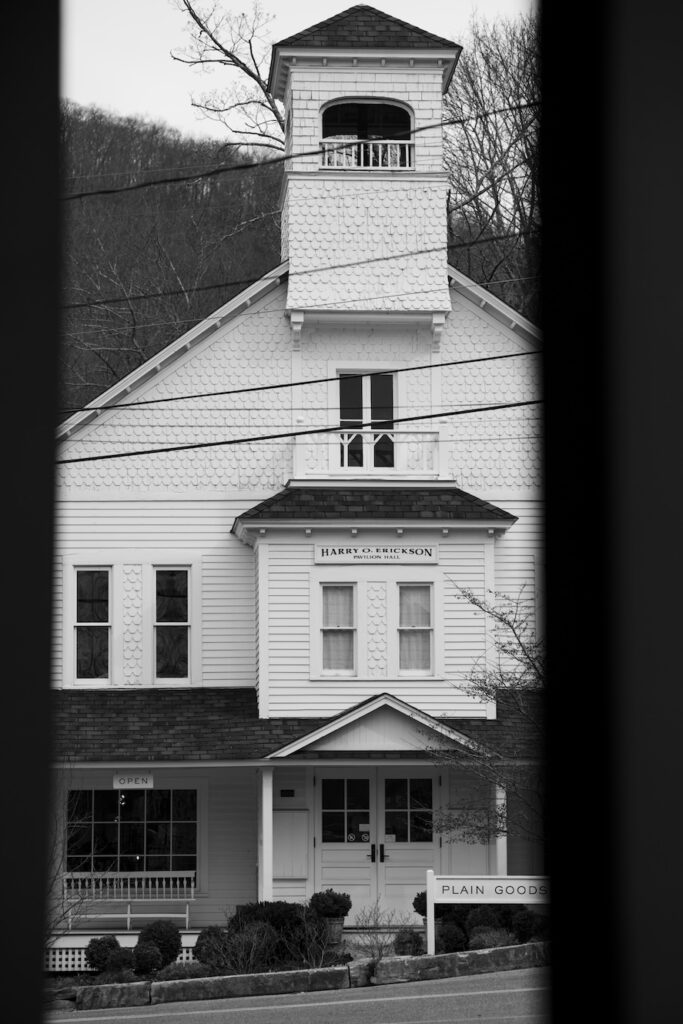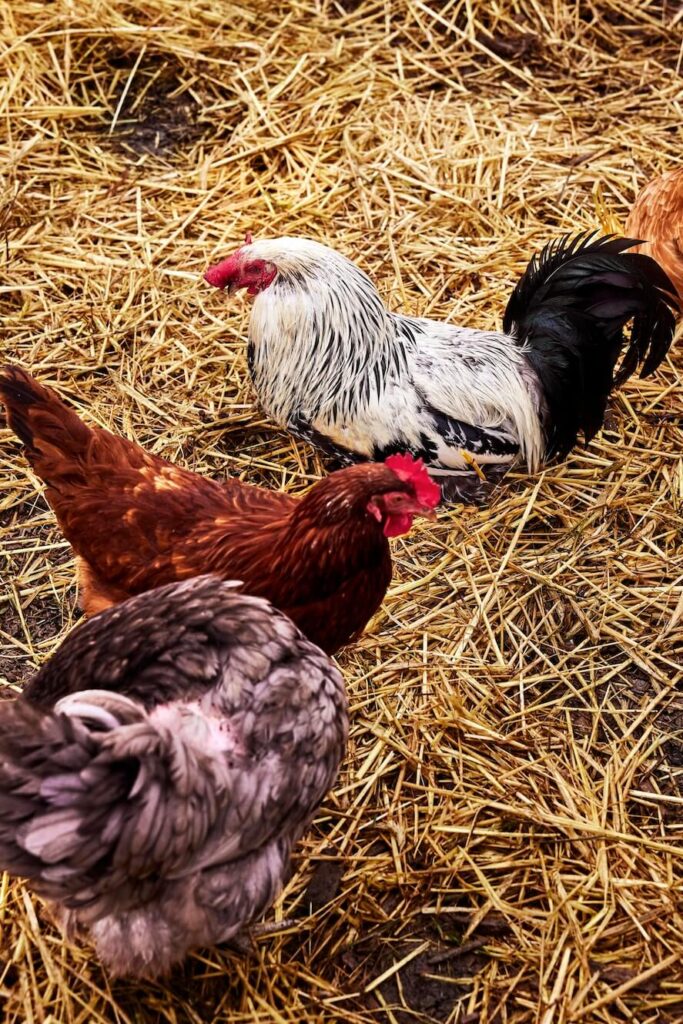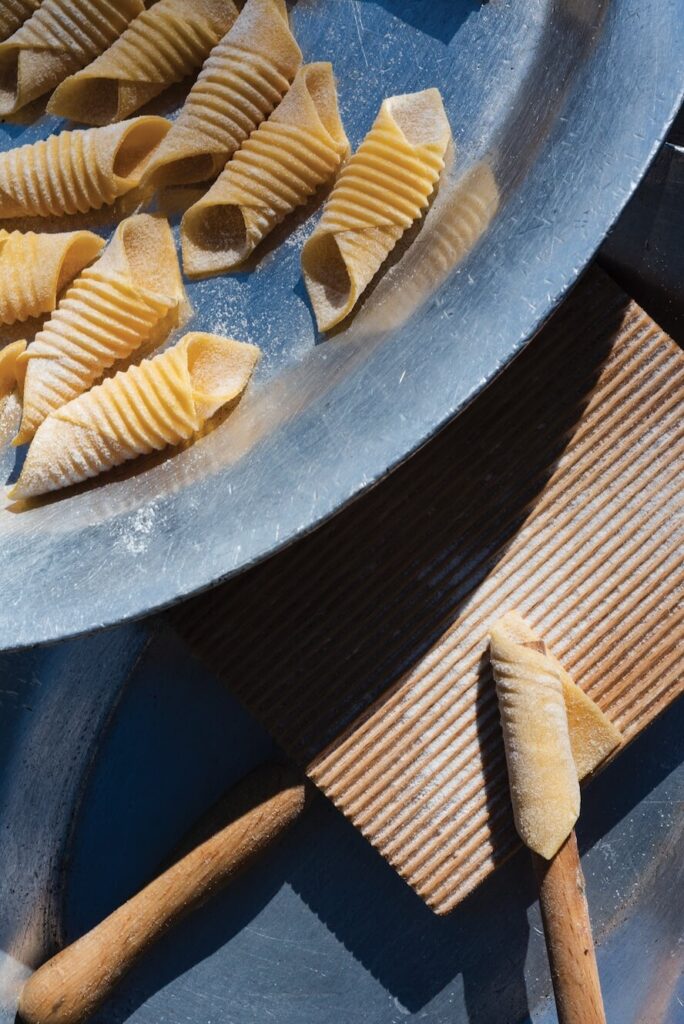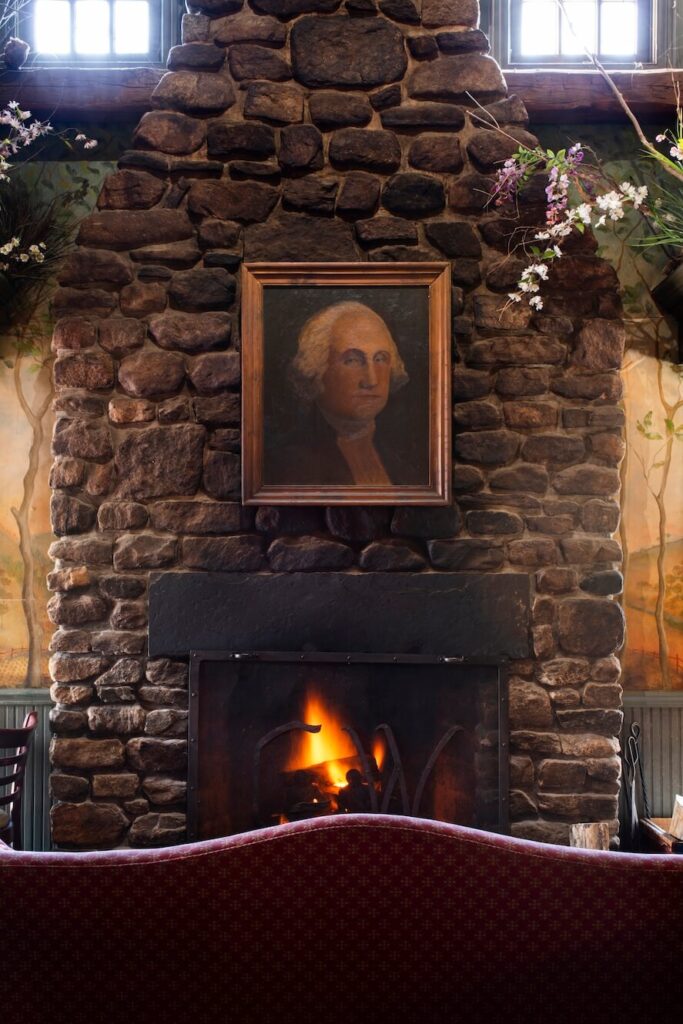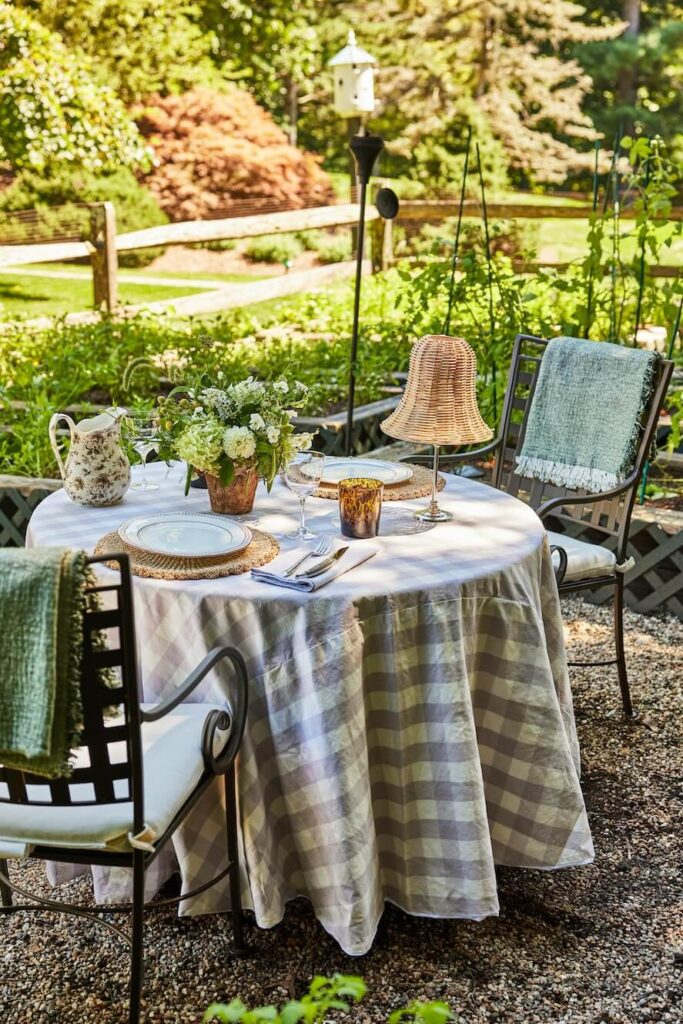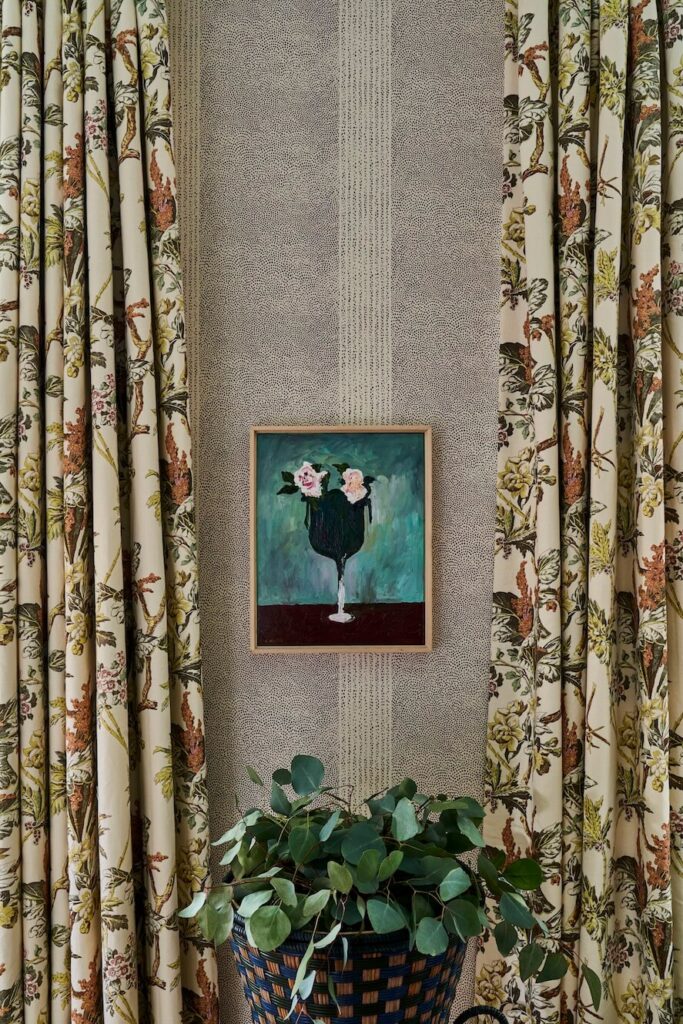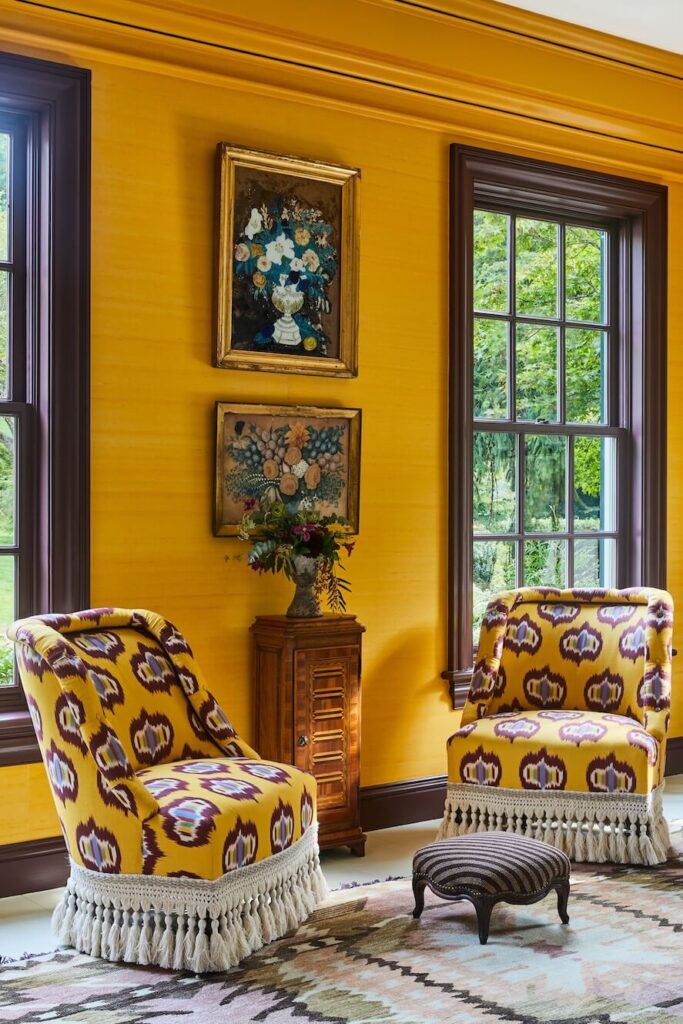The tranquil Litchfield Hills have been enticing travelers for decades, a green escape for well-to-do New Yorkers, frequented by luminaries such as Meryl Streep, Danny Meyer, Oscar and Annette de la Renta, Diane von Furstenberg, and Carolina Herrera Creative Director Wes Gordon, who calls the place home.

Nestled amid the serene landscapes of Litchfield County, its rolling hills and whispering trees, Gordon finds solace and inspiration in the tranquil beauty of rural Connecticut. Here, far from the frenetic pace of the fashion world, he has cultivated a sanctuary where his creativity can flourish and his vision can take flight.
It makes perfect sense, once you dig deep into Gordon’s philosophy about life and design.

In that way, charming Washington, Connecticut, and Gordon’s home there, certainly fit the bill. Special. Beautiful. Perfect. His life in the state is purposeful and free of clutter.
So it is with his work, as well—for each collection at Carolina Herrera, he strives to celebrate the transformative power of fashion, to imbue his designs with a sense of reverence and purpose. “My design approach is to make something beautiful,” he says of the looks he creates for the fashion house known for its impeccable style and bold elegance. “To make clothes that make a woman feel gorgeous, confident and empowered.”
As Gordon continues to shape the future of Carolina Herrera with his distinct vision in the quiet elegance of Washington, Connecticut, he has found not only a home but a source of endless inspiration for his creative endeavors. Despite a hectic schedule (shows at New York and Paris Fashion Week), the fashion designer answered some questions about why he chose the town he now calls home, and what he loves most about it.

What first drew you to western Connecticut and Washington? Why did you choose it to make a home?
Wes Gordon: My husband grew up in New York City and he and his family would spend their weekends in Roxbury, Connecticut. I got to know the area through him and fell in love with it. When a property adjacent to his family came up for sale, it was fate.

What’s a day in your life out in Washington look like? What are you doing, where are you going, who are you seeing?
Being outside as much as possible—we are usually quite reclusive and spend time on our property. We are lucky to have many animals and our two children love to spend the day outside playing with the horses, chickens and goats.
What’s your favorite thing to see or do in the area?
Discover and explore…drive down roads I’ve never been on before, visit a new shop, try a new restaurant.
Tell us something about the area you hadn’t suspected before you lived there that’s proven true.
How naturally beautiful it is. Considering you’re under two hours away from Manhattan, the landscape and topography feel worlds away.
Living in that part of Connecticut and being part of the community there, how does the natural environment and local culture influence your creative work?
I have many friends in creative industries who also spend weekends in the area so I’m always inspired by their talent and initiatives. Also, creativity benefits so much from moments of pause and calm, two things I’m able to find when I’m in Connecticut.
Favorite place in the area to eat:
If we’re going out to dinner, it would be either to the Mayflower Inn & Spa, G.W. Tavern or CT [Community Table].
Favorite place to shop in the area:
Privet House and Plain Goods—both are beautiful stores with an extraordinary curation in picturesque New Preston.

Finally, any advice for aspiring fashion designers or creative directors?
Trust yourself. This is an idea we all talk about often, but rarely have the courage to really act upon. You have to be your own North Star; it’s your uniqueness that will make you successful, and trying to emulate other successful people runs the risk of dampening your own fire. Trust yourself, listen to yourself—you’ll never make everyone happy so therefore you cannot look to others for your own validation.
Washington, Connecticut, and the surrounding region has become a destination for striking design, world class dining, and rejuvenating wellness activities, including at what may just be the most luxurious resort in New England, Mayflower Inn & Spa, Auberge Resorts Collection.
The food alone makes it a destination. If you’re a morning person and like to keep things light, Po Cafe, whose floor-to-ceiling windows look out on the historic Washington town green, dishes out a stellar acai bowl with bananas and blueberries. The coffee, roasted locally by Washington’s Zero Prophet and Bantam’s Krafted Brew Lab, is no slouch, either.

From there, don’t be afraid to sip a glass at The Owl Wine & Food Bar. Owner Ryan Cangello recommends pairing a French chenin blanc with an acorn squash fondue. “It’s a roasted half-acorn squash with a gruyere fondue, so you can kind of mix it all together and it’s served with crudites and crostini—and people absolutely love it,” he says.
Do consider a meal at the historic G.W. Tavern before you head home. Built inside an 1850 colonial home, the presidential outpost serves seasonal specialties like duck leg cassoulet and vegetarian Cobb salad. And if you’re in the mood for exquisite New American cuisine, Arethusa al Tavolo in Bantam never disappoints.
Then there’s Bantam’s Materia Ristorante, where you’ll find seafood items like yellowfin tuna crudo with osetra caviar and linguine with manila clams are standouts. “Linguine alla vongole is a signature dish. It’s out-of-this-world good,” Chris Hodson, Materia’s dining room manager, says.

Finally, in addition to being a fantastic option to hang your hat, Mayflower Inn & Spa offers some of the best victuals in the state. Nibbles and a cocktail in The Tap Room can yield quickly to a foray to The Garden Room, where you’ll be pampered by carefully considered creations. (Don’t worry about a jacket and tie: the dress code is “country casual.”) Previous menus from guest chefs have seen freshly shucked oysters, roasted leeks, three cheese gnudi with delicata squash, and fried quail with kale and sunshoke slaw and sweet chili sauce. A brioche ice cream sandwich also made guests swoon.

Lest you fear there’s little but wining and dining to be done here, the culture, crafts, and hiking in Washington and the surrounding region will assuage that notion swiftly. Upscale home goods and furniture shops have clustered along East Shore Road since the 1990s, and a new crop including Plain Goods, Anthony Todd Home, Pergola, and Privet House have garnered attention from New York Times Style magazine tastemakers.
All the stores are independently owned—and most of the time, the owners are present to help you select the perfect olivewood serving bowls and Danish-designed flatware to go with your antique folding harvest table. Privet House owner Suzanne Cassano says her shop is known for its eclectic German brush collection and handwoven baskets, but she doesn’t buy anything for the store she wouldn’t use herself. “Everybody has their own point of view and as a result of that each store has its own personality,” she says of the shops.

Beyond dining and shopping, you simply must hit the Appalachian Trails. About 52 miles of the iconic 2,190-mile path run through the northwest corner of Connecticut, but you don’t need to be a veteran mountaineer to tackle it. Dave Bruno, who maintains the region’s trails as head of the Appalachian Trail Mountain Club’s Connecticut chapter, recommends an easy mile-and-a-half trek. Park at the lot off Bulls Bridge Road and Route 7 in Kent, head over the Bulls Covered Bridge, which crosses the Housatonic River, and follow the blue-blazed trail for a quarter mile. You’ll arrive at the Ten Mile River Lean-to, a well-loved campsite frequently used by thru-hikers. (There’s a more challenging six-mile excursion that begins at Route 44 in Salisbury, and fearless hiking fanatics can try Bear Mountain, the tallest point in the state.)
And if the season is right, don’t spend so long on the trail, at the bar or collecting gorgeous wares that you fail to watch vintage stock cars at Lime Rock Park, where Paul Newman once raced. It’s a magical way to finish a visit to a place that would be more historic if it didn’t feel so full of life.


